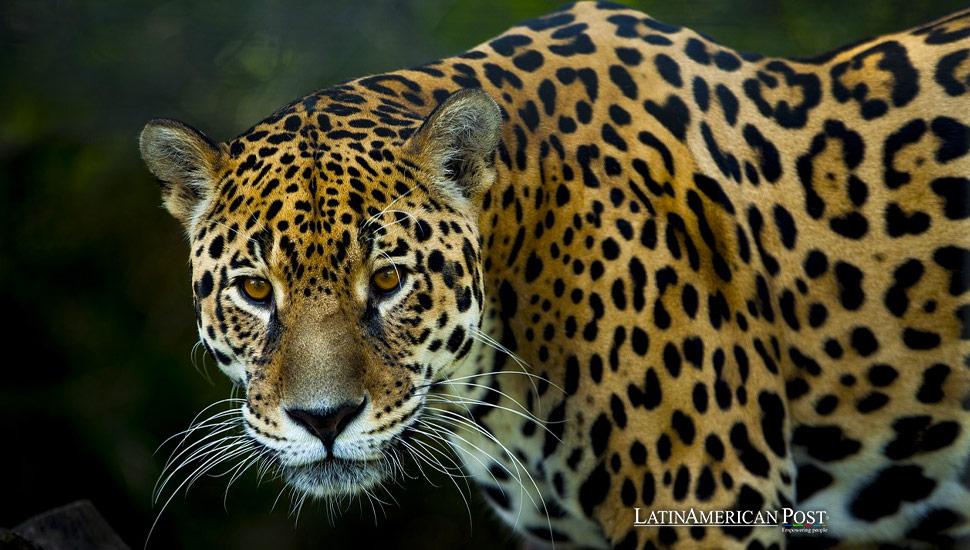Argentine Scientists and Greenpeace Unite to Save Jaguars in Gran Chaco

In a race against time, Argentine scientists and Greenpeace have launched Proyecto Yaguareté, a bold initiative to safeguard the survival and resurgence of jaguars in the Gran Chaco. This vast forest, the second-largest in the Americas, is home to a mere 20 of these magnificent creatures, making their preservation a matter of utmost urgency.
At the forefront of the battle to save the jaguar, a symbol of South America’s rich biodiversity, are Argentine scientists and Greenpeace. On Monday, they unveiled Proyecto Yaguareté, a comprehensive strategy to secure the survival and recovery of the jaguar population in Argentina’s portion of the Gran Chaco. This region, second only to the Amazon in size, is witnessing a rapid decline in jaguar numbers, with only about 20 individuals remaining.
Biologists Agustín Paviolo, Verónica Quiroga, and Carlos De Angelo, all prominent researchers with Argentina’s National Scientific and Technical Research Council (Conicet), are leading this ambitious project. They are joined by Hernán Giardini, coordinator of Greenpeace Argentina’s Forest Campaign. Together, they presented the ‘Pocy (optimal conservation landscape for the jaguar) Chaco,’ a strategic conservation program focused on habitat reconstruction to support the jaguar’s return to stability.
A Region Under Threat
These researchers have meticulously studied the jaguar’s behavior and essential needs within a shrinking habitat for two decades. The Gran Chaco is constantly threatened by deforestation driven by agricultural expansion and infrastructure development. This deforestation fragments the jaguar’s territory and depletes the biodiversity that supports its existence.
The team has delineated a conservation territory using extensive mapping and analysis of jaguar sightings. This territory includes historical landscape records to model the jaguar’s ideal habitat, based on a straightforward formula: more forests and access to rivers, fewer agricultural encroachments.
Carlos De Angelo elaborated on ‘nucleus areas’—protected zones that serve as central habitats. Ecological corridors connect these core areas to ‘potential areas’—forests that need protection to facilitate the jaguar’s expansion. Only 3% of the total area in the Chaco province of northern Argentina is suitable for jaguar habitation.
The Importance of Gran Chaco
The Gran Chaco spans 1,100,000 square kilometers, with 60% of its forests in Argentina. This area is vital for the survival of South America’s most significant predator. Despite its vastness, the region’s jaguar population has dwindled alarmingly, prompting urgent conservation measures.
Since 2019, the Argentine Mammal Study Society has classified the jaguar as “critically endangered” due to habitat loss and rampant poaching. Verónica Quiroga highlighted that while local communities and small-scale farmers are allies in conservation efforts, the main culprits are large-scale agricultural enterprises. These businesses have been buying out small farmers and are responsible for significant deforestation. Provincial governments must be more proactive in regulating land use to prevent further habitat destruction.
The jaguar’s plight is part of a broader historical struggle in Latin America, where conservation efforts often clash with economic interests. Historically, the jaguar’s range extended from the southern United States to Argentina’s coastline. However, by 2020, their population had been halved globally, with a 95% reduction in Argentina alone. Today, only 200 to 300 jaguars remain in three Argentine provinces.
Legal and Environmental Advocacy
The Forest Law, which aims to protect natural spaces from human encroachment, was enacted in 2009, but its implementation has been inconsistent. In Chaco, the lack of enforcement, regulatory failures, and insufficient environmental education exacerbate the jaguar’s endangerment. Quiroga emphasized the need for provincial governments to address hunting and deforestation more effectively and communicate conservation imperatives to local populations.
Greenpeace is actively litigating against four Argentine provinces—Chaco, Salta, Formosa, and Santiago del Estero—alongside the national government for failing to enforce the Forest Law. The Argentine Supreme Court has called for a public hearing to discuss halting forest exploitation and ensuring “zero deforestation” in jaguar habitats.
A Vision for the Future
The ‘Pocy Chaco’ analysis presents a transformative vision for the region: a conservation landscape meticulously designed for the jaguar. This initiative aspires to be a territorial management tool, guiding policies and actions to restore and protect jaguar habitats. With a united front of scientists, environmentalists, local communities, and governments, Proyecto Yaguareté shines as a beacon of hope, demonstrating the collective effort required to safeguard one of Latin America’s most iconic and endangered predators.
Proyecto Yaguareté is not just about saving the jaguar. It’s about finding a balance between environmental conservation, economic development, and indigenous rights in the broader Latin American context. As the Gran Chaco grapples with modernization and climate change threats, this project stands as a testament to the resilience and collaborative spirit needed to protect our natural heritage, benefiting not just the jaguars but also the local communities that depend on these ecosystems.
Also read: Argentina Powers Bitcoin Mining with Innovative Energy Project
The jaguar’s survival in the Gran Chaco is not just a regional concern but a symbol of Latin America’s broader environmental challenges. Through sustained scientific research, community engagement, and stringent legal frameworks, the Proyecto Yaguareté aims to carve out a future where jaguars can again thrive in their ancestral lands. This endeavor, while fraught with challenges, highlights the enduring commitment to preserving biodiversity in one of the most ecologically significant regions of the world.





